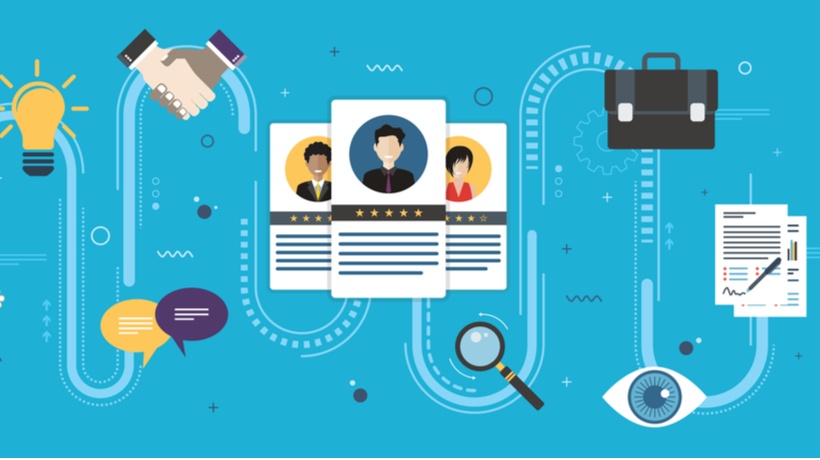Employee Experience Drives Business Performance
While most organizations today focus on the customer experience, since the pandemic, many organizations have realized how critical their employees are in developing and delivering the products and services that drive the customer experience, and ultimately, business performance results. With thousands of employees being away from work due to COVID-19, organizations and customers felt the employee void. Supply chain delays and their impact on the bottom line underscored the importance of employees and their experience within the organization.
Organizations that did not focus on the employee experience felt the impact of the Great Resignation. The Bureau of Labor Statistics reported that in July 2021 alone, four billion people quit their jobs. The Work Institute's 2020 Retention Report [1] states that the three key reasons that employees walk out include a lack of career development opportunities (20%), poor work-life balance (12%), and manager behavior (12%). All these are aspects that make up a large part of the employee experience. This article posits that your organization must center on the employee experience (EX) to drive business performance, and answers three key questions to help you begin.
What Is Employee Experience?
While there are many definitions of the employee experience, I like how Gartner and Harvard Business Review define it, as "how employees internalize and interpret the interactions they have with and within their organization and the contexts that influence those interactions [2]." The customer experience tracks the journey of touchpoints the customer may have with products and services. Similarly, the employee experience includes all the touchpoints the employee has with the organization throughout their journey, including recruitment, interviewing, onboarding, engagement, development, growth, and departure.
In practical terms, it includes the ease of accessing and using organizational tools, the depth of interaction and the level of trust they have with the immediate manager and other leaders in the organization, and the sense of belonging they have in the team. It also includes the benefits package, work-life balance, learning, and rotational opportunities.
Why Is The Employee Experience Significant?
The opposite of a great employee experience is employee disengagement and its underlying cost to the bottom line. McLean and Company reports that a disengaged employee can cost the organization close to $3400 for every $10,000 paid in annual salary [3]. In aggregate, disengaged employees cost the U.S. economy $350 billion per year.
Most organizations have focused on customer satisfaction and loyalty as defined over 20 years ago by Fred Reichheld, who also brought us the net promoter score [4]. Continuing on from that, organizations then focused on employee satisfaction and loyalty. Today, satisfaction and loyalty are the bare minimums. The critical performance differentiator is the experience, both for the customer and the employee. Rightpoint CEO Ross Friedman writes that "your employees are as important as your customers. They are your brand ambassadors, and creating a seamless employee experience is part and parcel of an experience-driven organization [5]."
In their recently republished book, The Experience Economy, authors Joseph Pine II and James Gilmore posit that organizational performance lives and dies by the quality of experiences and the emotional engagement organizations create for their customers in a time-starved world. Today, this is also true for employees. Organizations that want to succeed in the experience economy must compete in creating memorable, engaging, and transformational experiences for their customers and employees alike because, simply put, it is good for the bottom line.
How Can You Strengthen The Employee Experience In Your Organization?
Organizational structure and culture are foundational to the quality of the employee experience. It's more than pizza and ping-pong tables. Corporate commitment to it must be genuine, enterprise-wide, and employee-centered. Gallup defines it as "the journey an employee takes within your organization. This journey includes every interaction between the employee and the organization including the experiences around the employee's role, workplace, management, and overall well-being [6]." So, where do you begin?
First, you must review your processes and redesign them to center on the employee, not the organization. Gallup offers an example of applying this tactic around the hiring process [6]. A hiring process that is smooth, transparent, and speedy can leave a good impression on a new employee. A hiring process that focuses on what they do best and aligns them to a role suited to their natural talents can become a memorable experience for the employee and jump-start their employment journey.
Next, you must create a culture of learning. Research shows that employees offered challenges and opportunities to learn in an organization are more likely to stay engaged and productive. In the chapter I wrote for the book Forward Focused Learning, I highlighted that a learning culture serves as oxygen for a thriving organization. The only way to tackle omnipresent change is by continuously learning. Fostering a culture of learning in your organization will encourage employees to become lifelong learners.
Offering opportunities to employees to learn about growth mindsets is a great start. In her research on growth versus fixed mindsets, Dr. Carol Dweck discusses the tyranny of "now" versus the power of "yet" [7]. In a learning culture, organizations encourage and support employees to explore the power of "yet" through embracing failures as opportunities to learn, embracing the problem-solving journey, and iterating and pivoting. Another foundational learning element here is design thinking [8]. Encouraging employees to learn, embrace, and apply design thinking can transform how they view challenges, ask questions, and tackle problems to create better customer experiences.
A third tactic to consider is to invest in learning. Many organizations offer learning stipends, encouraging employees to learn what is best for them in whatever format works best. Learning can include books, online courses, conferences, coaching, and training. Research shows that learning stipends enhance employee agency and strengthen the employee experience.
Conclusion
Essentially, employee experience is everything the employee sees, feels, learns, and does at your organization. Understanding what it entails, why it is crucial, and how to build it are three key steps to better organizational performance.
References:
[1] Work Institute: 2020 Retention Report
[2] The Modern Employee Experience: Increasing the Returns on Employee Experience Investments
[3] Develop an Engagement Program Strategy
[4] Fred Reichheld: How the Net Promoter® Score (NPS) got its name
[5] The New Competitive Advantage Is Experiences For Customers And Employees Alike
[7] Carol Dweck: A Summary of Growth and Fixed Mindsets








